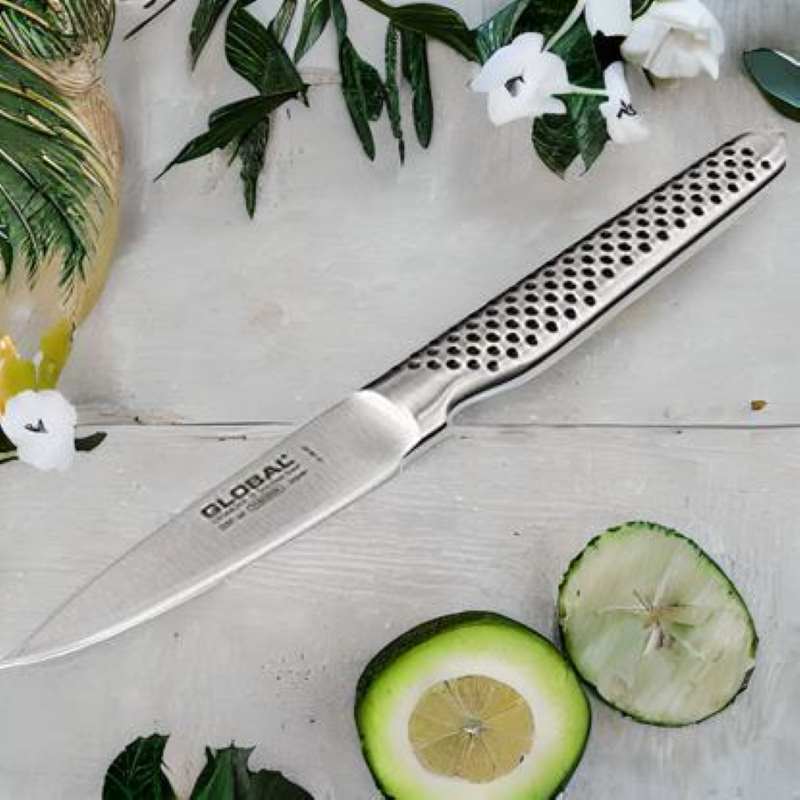 When it comes to knives, most people tend to focus on the big, heavy-duty ones like chef's knives or cleavers. However, there's another knife that shouldn't be overlooked: the paring knife.
When it comes to knives, most people tend to focus on the big, heavy-duty ones like chef's knives or cleavers. However, there's another knife that shouldn't be overlooked: the paring knife.
Despite its small size, a good paring knife can be an incredibly versatile and useful tool in the kitchen. Here's everything you need to know about this little knife that can do big things:
What is a paring knife?
A paring knife is a small knife with a thin blade that's typically between 2.5 and 4 inches long. It's designed for precise tasks such as peeling, trimming, and slicing small fruits and vegetables, as well as other delicate tasks that require fine control.
What are the benefits of using a paring knife?
While a chef's knife is great for most tasks, there are certain things that a paring knife can do that a larger knife can't. For example:
1.Precision: The small size of a paring knife makes it perfect for precision work like peeling, trimming, and shaping fruits and vegetables. With a paring knife, you can easily remove just the outermost layer of a vegetable or fruit without wasting any of the flesh.
2.Versatility: Paring knives can be used for a wide variety of tasks beyond just peeling and trimming. They're great for cutting citrus fruits into sections, deveining shrimp, and trimming fat from meat, among other things.
3.Control: Because of its small size, a paring knife offers more control than a larger knife. This can be especially helpful when working with delicate or intricate items like herbs or small fruits.
What should you look for in a paring knife?
When shopping for a paring knife, there are a few things to keep in mind:
1.Blade material: Look for a knife with a high-quality blade material like stainless steel or high-carbon steel. These materials will be more durable and hold their edge better than cheaper alternatives.
2.Blade shape: Choose a paring knife with a pointed tip for precise work, or a rounded tip for tasks that require a little more strength.
3.Handle: The handle should be comfortable to hold and easy to grip, even when your hands are wet or greasy.
How should you use a paring knife?
1.To get the most out of your paring knife, keep these tips in mind:
2.Use the right grip: Hold the handle with a firm grip and use your thumb and forefinger to guide the blade.
3.Use the right technique: Use short, controlled strokes when peeling or trimming, and always cut away from your body.
4.Keep it sharp: A dull knife is more dangerous than a sharp one, so be sure to sharpen your paring knife regularly.
In conclusion, a paring knife may be small, but it's a powerful tool in the kitchen. Whether you're peeling an apple, trimming an artichoke, or deveining shrimp, a good paring knife can make the job faster and easier. With its precision, versatility, and control, it's definitely a knife worth having in your kitchen.
Bulmers Gifts stock a wide range of Paring Knives.

























